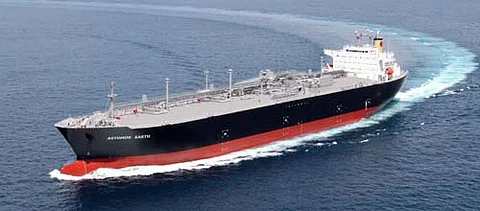

Lloyd's Register has released a report looking into a new trade in ethane emerging as a result of increased gas production in the United States – and the technology required for Very Large Ethane Carriers (VLECs).
According to the classification society, US ethane production capability, as a by-product of total increased US gas production, is under-utilised.
The potential exists for annual exports of one million tonnes of ethane to provide employment for 0.18 million cubic metres of shipping capacity if shipped to North Europe, a further 0.32 million cubic metres if shipped to South Asia, and a similar amount to China through the Panama Canal.
The society's report, titled Seaborne Ethane: a Report into the Commercial Need and Technical Requirements for Very Large Ethane Carriers, looks at the risks and challenges in developing a safe and efficient trade in ethane using larger ships and requiring ethane specific technical solutions.
"The window of opportunity to tie up ethane exports and secure tonnage to serve this trade is now open to feed potential markets in Europe and Asia," says Tim Protheroe, President of Lloyd's Register in North America.
"We have identified the technical risks and best technical pathways to help ensure that near-term demand for large VLECs can be met by shipyards and gas containment system suppliers."
One of the critical factors to be addressed is the containment technology used in very large ethane carriers (VLECs) as traders look for the most efficient shipping options.
Historically, ethane has been transported in small liquefied ethane/ethylene carriers (LEC), designed and constructed to carry ethylene as well as ethane and other LPG cargoes. All these vessels have Type-C containment systems and it is estimated that the maximum feasible size of a ships with Type-C cargo tanks is around 40,000m3.
The report evaluates all tank technology options and identifies that, for ethane carriers of 80,000m3 and over, the adoption of either prismatic Type-B tanks or membrane systems would provide the likely best technical design pathways – based on a ship with three-to-four tanks.
An additional benefit of ethane is that, as with LNG, the cargo can be used to power an ethane carrier's engine, noted Lloyd's Register. But this requires that specific risks be addressed.
To that end, Lloyd's Register and MAN Diesel and Turbo have collaborated on an ethane engine project and LR has already issued an approval-in-principle for an engine combusting ethane.
